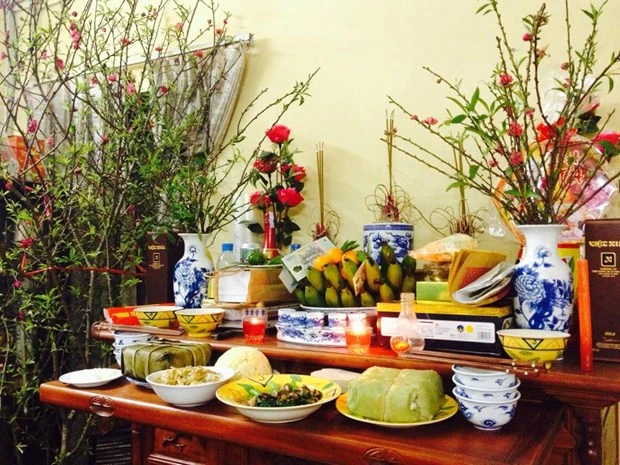Hanoi (VNA) - Worshipping ancestors, an ancient Vietnamese tradition, is a ritual practice paying tribute to deceased family members and reminding people of their roots.
Worshipping ancestors reflects the influence of patriarchy and Confucianism on Vietnamese culture. Since Confucianism was introduced to Vietnam during the Chinese domination, filial piety, the most fundamental of Confucian values, has been very much appreciated in Vietnamese families.
Accordingly, children are obliged to respect their parents in life and to remember them after they die. The practice of ancestor worship is thus an expression of “filial piety” toward deceased parents, relatives and ancestors.
People even had to worship five generations of ancestors in accordance with the Hong Duc legal code, which was adopted by the Le Dynasty during the 15th century.
Most Vietnamese families today have an ancestral altar placed in a prominent place of the house. It is set with ancestral tablets and pictures, together with an incense burner bowl in the centre as a symbol of the stars. Inside the bowl usually stands a circular incense stick that represents the universe. Two candles are placed on the sides of the altar to embody the sun (left) and the moon (right).
On special occasions like ancestors’ death anniversaries or the Lunar New Year, special rites are performed to communicate with the dead. The rites consist of making offerings of fruits, foods and wine; lighting the candles; and burning incense before praying in front of the altar.
Tet, or Lunar New Year, is the most important festival of the year for Vietnamese people and a time for family reunions. It is an opportunity for descendants to invite the souls of their ancestors to join the family’s Tet celebration.
Several days ahead of Tet, local people traditionally go to the cemetery in order to pay homage to the dead. On New Year’s Eve, they tend to prepare a large feast together with other offerings such as fruit, flowers, and sweets to their ancestors. It is therefore typical for the end-of-year party to be attended by all members of the family.
Followers of Feng Shui believe that good preparations bring about good luck. When cleaning the altar, it is worth remembering that after removing the old incense sticks, the home owner should not pour out the ashes from the incense urn, because such an act is said to throw away happiness, health, and success. Instead, the owner should use a small spoon in order to gradually scoop the ashes out of the urn.
A tray of fruit is an indispensable item found on the altar of every family during Tet. Depending on the customs of each region, residents choose different varieties of fruit. For example, northerners usually prefer bananas, apples, oranges, a pomelo, peaches, papayas, and chilies to display on the altar.
Furthermore, people from northern regions tend to place a bunch of green bananas at the bottom of the tray, symbolising the gathering of descendants. However, this kind of fruit is never used by southerners who believe that bananas always bring bad luck. Instead, they often prepare five kinds of fruit, namely custard apples, figs, coconuts, papayas, and mangoes.
Elsewhere, people from the central region do not care about what kind of fruits are displayed on the altar as for them the most important aspect of the ritual is to respect their ancestors.
Moreover, it is the habit of many families to display artificial flowers made of paper, plastic, silk, or other materials on the altar, for economic reasons. However, followers of Feng Shui point out that displaying artificial flowers does not mean respecting ancestors.
According to traditional beliefs, fresh and long-lasting flowers such as lilies, yellow chrysanthemums, a branch of apricot, or peach blossoms should be used to decorate the altar during the Tet holiday.
The ancestral altar occupies a prominent place in every Vietnamese home, no matter whether the family is rich or poor. It is a manifestation of the country’s culture that shows its respect for both the past and the future./.






















